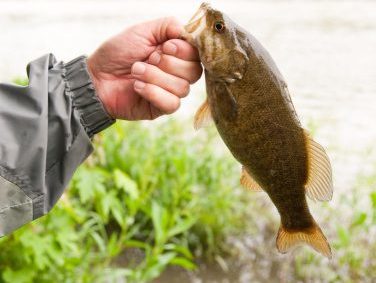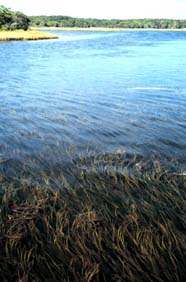
The problem is that in most of the areas we think to fish, a lot of young, smaller bass dominate the scene and it can be difficult to find that lunker. It some rivers, 100 or more bass can be caught but the question is, how do I get to the big bass.
That’s where Blaine Mengel, the Backwoods Angler comes in. He writes a dead-on accurate article on finding summer smallmouth bass in rivers. Check this excerpt and read the full article as well.
Summer smallmouth river fishing
Locating quality smallies during the summer is half the battle. They will resort to eating insects during heavy hatches, but larger bass will frequently be located in or adjacent to areas with a heavy forage base like bait fish, crayfish or small eels, and these areas may offer deeper water.
Ledges and boulder-laden pools and flats are great because they offer cover during sunny afternoons. And if the sun is high during the midday hours, target areas with shade, either from trees, bridges or high shoreline ridges.
Soft jerkbaits, such as Case Sinkin’ Salty Shads, are hard to beat. Jerkbaits or twitchbaits, such as Rapala’s X-Raps, work well, especially in heavy current or stained water. Stick worms drifted wacky-style occasionally work well for less active bass, as will a smaller tube jig. And don’t forget the oft-used grub and ball head jig combo.
Topwater lures are productive when bass are looking up or feeding on bait fish or insects.
Mature bass will be more prone to feed during low-light periods like early morning, late evening and during overcast or even showery days, so plan fishing outings accordingly during the summer months.
Few things are more tantalizing to a large bronzeback than a 4- or 5-inch stick worm wacky-rigged and slowly fluttering through the water column. Tubes hopped among the deep boulders and ledges can be effective, as can a shakey-head worm.
A pool with less rock cover and depths of 8-to-20 feet in depth with slow current is a “drop-shot-friendly” area. Small paddle-tail and stick worms, and soft jerkbaits work well on a drop-shot rig.
Here’s one last tip for success when fishing for summer smallies: Don’t ignore grass and weeds. Smallmouth are notorious
for hanging around rocky areas and ledges. However, during the summer, more than any other time of the year, they will use grass and weeds.
Smaller fish and baitfish will use grass as protection from predator bass holding nearby. And if patches of eelgrass or star grass are located in current, they create a canope of cover from which bass can ambush unsuspecting prey. Read the original article by Blaine Mengel here
Summer smallmouth river fishing can be a challenge if your goal is trophy sized bass. It’s easy to find a lot of smaller, aggressive bronzebacks but follow Blaine’s advice and you will find some special fish all through the summer months.
If you have additional tips for our readers or questions, feel free to ask in the comments section below. Follow us on facebook 🙂



